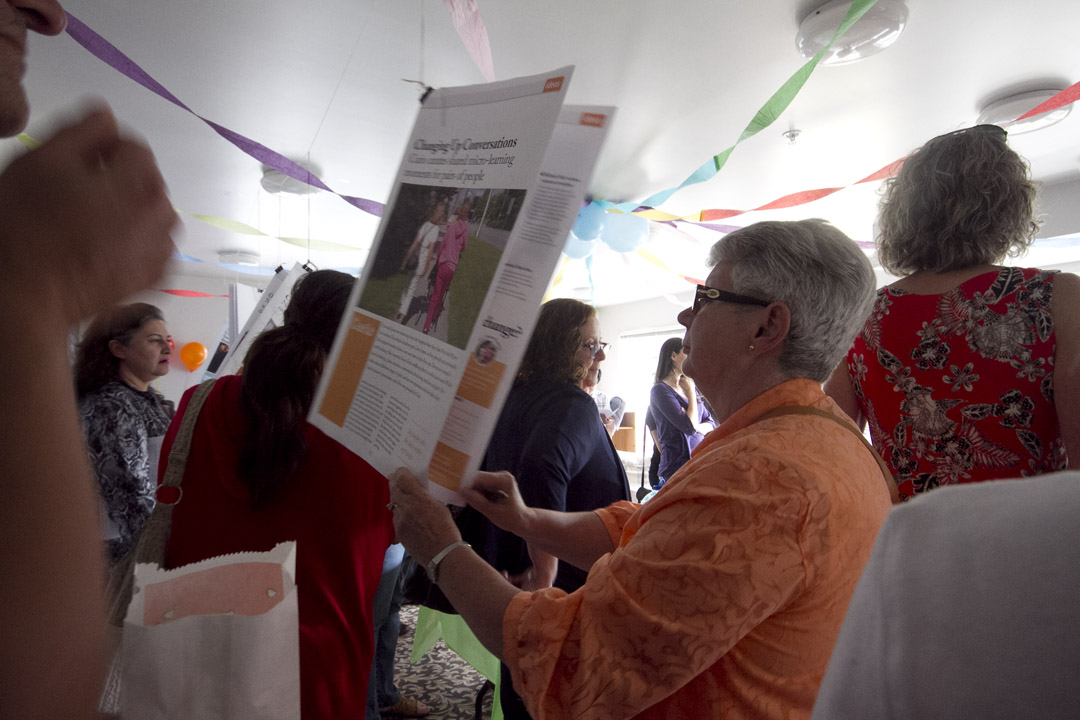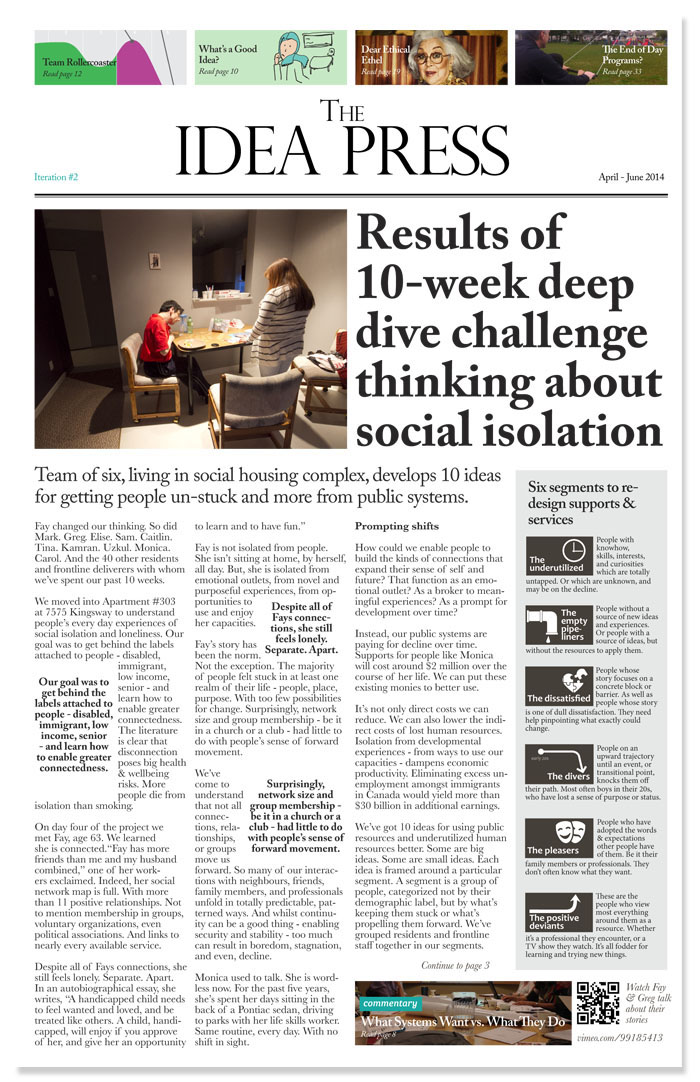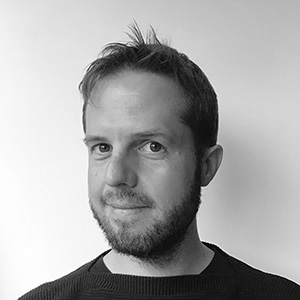Categories
Meet Fay and Greg, two of our neighbours:
We made a newspaper because we just didn’t think a staid report could do the job. So much of what we write goes un-read. Lost on people’s desks, and buried within their email inboxes. What if we created something that didn’t have to be read linearly? Where people could engage with articles, at their own pace, and where the content would be so varied, and so rich, it would reel them back in?
This is how – just 10 days before the end of the project – we decided to transform our studio space into a newsroom. We would model ourselves after The New York Times, or The Guardian. With a mix of news items, people profiles, behind-the-scenes features, editorials, and magazine-type spreads.
Turns out looks can be deceiving. We have such profound respect for the journalists, editors, commentators, photographers, and designers who manage to put together a paper. Every day. We went through 4 versions in 5 days. Nothing worked. It was boring to read. It was overwhelming to look at. 2.5 days before our print deadline, we scrapped most everything we had. And started over.
With some fresh writing, and a totally revised layout. We finished with one hour to spare. We were still printing when chief executives, funders, and fellow residents showed up for our Wrap Party.

On pages 1-6, we profile 5 pairs of people we met. People who at first glance have little in common. Like Mark and Sam. Mark lives alone, and attends a day program for people with cognitive disabilities. Sam is a father of 3 and a refugee from Kosovo. Both are stuck whittling their days away. Not using their capabilities.

On pages 8-11, we offer our commentary. About the wider policy context & services landscape. Government funders & service providers talk a lot about change, but have few mechanisms for actually bringing about change. We name 6 of our change principles – drawn from our fieldwork.

On pages 12-17, we take readers behind the scenes. Get a feel for the roller-coaster emotional ride we went on, and find out what ethnographic methods really look like in practice.

On pages 18-19, we review theory & ethics. Read some of the articles that informed our thinking, and explore some of the moral quagmires we stumbled upon. With our eyes wide open.

On pages 22-47, we present the Special Ideas Section. With 5 of the ideas visualized. We write from the future: what would life look like if these ideas existed?

On the back page, we introduce prototyping. How is a prototype different than a pilot? Learn about prototypes we’ve run in other jurisdictions, and how a prototype would look in Burnaby.

So download your copy of the Idea Press of the Idea Press. Grab yourself a glass of wine or a cup of coffee and have a good ‘ol read. Let us know what you think. We love letters-to-the-editor. We’ll publish them in our next iteration!
